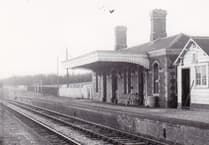BATH and North East Somerset Council has been handed the funding to install “liveable neighbourhoods” across the district — but costs have soared and the programme has been ‘scaled back’ by almost a third.
The council had previously planned to spend £7.64m on 15 liveable neighbourhoods — also called “low traffic neighbourhoods” or LTNs — which see roads closed to through traffic several areas across the district to make residential streets safer and more pleasant for cycling and walking.
But the number planned has been cut back due to “funding constraints” and the impact of inflation on construction costs.
It is now expected to cost £9.45m to bring in just 11 schemes — with the figure rising to £11.48m once maintenance costs for the next 20 years are factored in. The council has now been granted the funding to deliver the schemes by the West of England Combined Authority.
Manda Rigby, Bath and North East Somerset Council’s cabinet member for highways, said: “I welcome the investment and endorsement which was given by the West of England Mayoral Combined Authority for our liveable neighbourhoods scheme. Our aim is to create a choice of healthier, safer active travel routes for people to get around Bath and reduce the need for short car journeys. If we are successful, then liveable neighbourhoods would also support the council’s wider aims to tackle the climate emergency.”
B&NES Council itself has put £2.54m into the project. On Friday, September 20, the West of England Combined Authority’s committee agreed to give the authority the rest of the £5.1m from government’s City Regional Sustainable Transport Settlement fund that had been earmarked for the project — along with an additional £1.81m the council now estimates it needs for the schemes.
Ms Rigby said: “Implementing road schemes is costly and we do have to allow for inflationary measures. Based upon the work to date, our bid could only be an estimate. Some schemes are more complex and may involve, for example, the development of paths and works on road junctions, so it is inaccurate to suggest each scheme will cost the same amount.
“We will now go back to communities to further consult on producing detailed designs with a budget which allows us to engage, develop and create healthier, safer active travel routes for everyone.”
The full list of the 11 schemes now funded (including four already in place) are: Church Street and Prior Park Road, Whitchurch Village and Queen Charlton, the Southlands area (Weston), New Sydney Place and Sydney Road, the Lyme Road and Charmouth Road area, Lower Lansdown and The Circus, Temple Cloud, the Pulteney Estate area, the London Road and Snow Hill area, Entry Hill, and the Chelsea Road area.
The four schemes that have been dropped amid rising costs are: the Mount Road area, the Oldfield Lane and the Avenues area, the Morris Lane and Bannerdown Road area, and the Egerton Road and Cotswold Road area. The council said it hoped it could still progress ideas in these areas through future funding or other projects.
Ms Rigby said: “Following Friday’s decision, I would like to reassure residents that we will continue our ongoing engagement with them and with ward councillors, so together we can prioritise the right interventions that will make streets more attractive and where there are issues we will work them through with communities to reach the right balance.”
The council said that the liveable neighbourhood programme aims to reduce the impacts associated with excessive traffic in residential areas, such as through traffic, congestion, and speeding, and to create environments where it is easier, safer, healthier, and more attractive to walk, wheel and cycle. It stated that, currently, 42 percent of all journeys in Bath are under 3km and done in private vehicles.
But liveable neighbourhoods have been highly controversial in the city. Three Bath locals attended the West of England Combined Authority committee to speak in support of the programme — but a lengthy statement was also submitted from a group of Bathonians who said they supported the principles of liveable neighbourhoods but had “suffered” from the council’s handling of the schemes.
Three liveable neighbourhoods are already permanently in place on Church Road in Bath, on Queen Charlton Road near Whitchurch, and — despite protests — on Southlands in Bath. A fourth liveable neighbourhood in place on a trial basis has seen Sydney Road closed to through traffic — and has been so controversial it has been debated in Parliament.
The Sydney Road scheme has been welcomed by people on the road who said they had been “freed from the tyranny of the motorcar,” but people living nearby warned it had increased traffic onto neighbouring roads and now “near misses are happening the whole time because of the Sydney Road LTN.” The consultation on the trial closes on October 3.




Comments
This article has no comments yet. Be the first to leave a comment.